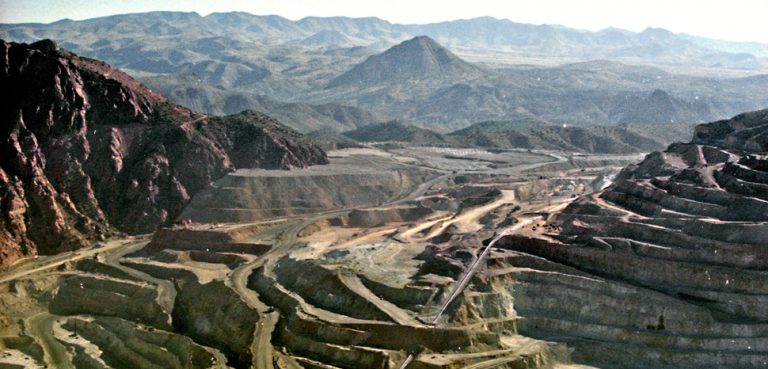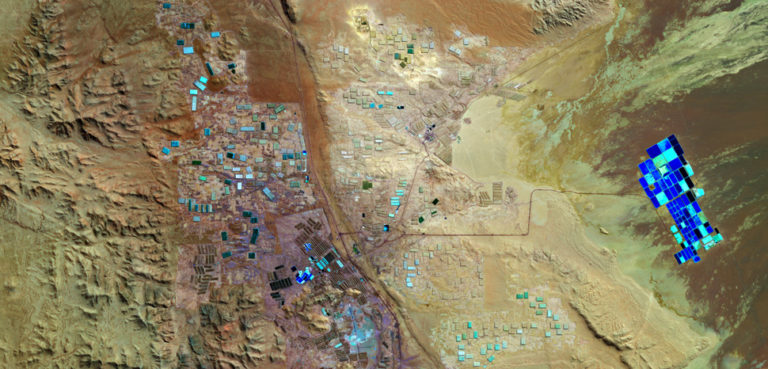Critical minerals and rare earth elements are commodities whose value continues to increase, given their importance to the global economy and new technologies. The problem is that many critical minerals are located in areas of the world that are either difficult to access or are unrest prone. The latter is the case of the Balama graphite mine in Mozambique, which recently shut down operations amid ongoing protests in the African nation.
The controversial October elections
Mozambique is suffering through a new wave of unrest. The country has already made global headlines for the religious-extremist insurgency unfolding in Cabo Delgado. Now, protests continue as Daniel Chapo of the ruling Frelimo party, which has been in power since 1975, was declared the winner of the 9 October polls. The opposition, led by Venâncio Mondlane, denounced the results as fraudulent, and the vast majority of the population would appear to agree.
The protests quickly spread and have affected several key nodes of the country’s critical infrastructure and economic activities. For example, protesters went to the Ressano Garcia and Gigawatt thermoelectric plants, demanding the total shutdown of energy production, according to Electricidade de Mocambique. “Fearing unforeseeable repercussions,” the company said the plants near the border with South Africa were “forced to halt energy production.” This measure not only affected Mozambique’s internal demand but also affected energy deliveries to neighboring Zambia.
Closure of the Balama mine
As for the Balama graphite mine, the owner, Syrah Resources (based in Australia), announced in mid-December force majeure due to the widespread protests. The company explained, “the disturbances at the Balama mine began in late September, when a group of farmers with historical land resettlement grievances initiated protest actions.” Protests continued throughout the post-election period, and Syrah demobilized most of its operational staff, maintaining “only a full contract security presence at the site.”
It is unclear when the mine will renew normal operations. The new Mozambican government is scheduled to be installed in January 2025. However, the protests could force a different outcome.
Scott Morgan, president of Red Eagle Enterprises, a consulting firm in Washington, DC, explained to the author, “although only 6% of the total global graphite production [comes from Balama,] the product mined in Mozambique is renowned for its quality.” Moreover, “the longer this facility is offline, the bigger the hit will be to the Mozambican economy.” The mine’s importance for regional workers cannot be overestimated, as the facility is located in the “economically depressed” Cabo Delgado province, Morgan added.
The election related protests and their consequences, namely shutting down power plants and a profitable graphite mine, in addition to the ongoing insurgency, will likely scare potential investors in the country. Morgan noted, “several industries and governments are looking for minerals [especially critical minerals and rare earth elements] that are not extracted from conflict zones or in areas without the influence of China.”
Mozambique produced 120,000 tonnes of graphite in 2020, 77,100 tonnes to 2021, while the estimates for 2022 and 2023 were 182,000 and 117,400 tonnes, respectively. It is unclear how much graphite the country will produce in 2024, given ongoing developments.
The shutdown of Balama occurs as global demand for graphite grows, and the company enjoyed some recent victories. Earlier this year, the US International Development Finance Corporation and Twigg Exploration and Mining Limitada, Syrah Resource’s subsidiary, signed a binding agreement for a USD 150 million loan to support the Balama mine. The loan will provide capital for the mine’s operations, expand Balama’s tailings storage facility, and fund studies to develop Balama’s vanadium resource. The mining company added, “the loan is DFC’s first loan to a graphite operation and aligns with the US government’s push to secure critical minerals for clean energy and electric vehicle supply chains.”
Analysis
The present and future of the Balama graphite mine need to be broken down as they involve several pressing issues. First, there was regional discontent about the mine’s operations even before the election. Specifically, local landowners have protested against the resettlement of agricultural land. This situation is not new, as protests by local residents against mining corporations due to pollution, environmental destruction, or unfair land deals are common.
The Denis Hurley Peace Institute has warned that “uncontrolled mining” in Mozambique “may have adverse effects on the environment and locals, and is likely to fire up unrest in the country that is already experiencing violence in Cabo Delgado Province.” Indeed, there have been protests over resettlement issues in the country. However, the mine’s major problems have been tied to the country’s existing challenges, namely insurgencies and a lack of democratic rule and good governance. This statement does not mean that the Balama mine is a beacon of efficient mining operations, though cursory research by the author of this analysis did not find any blatant examples of pollution or abuse of workers at the mine.
Geopolitics and mining operations in frontier markets and volatile regions for critical minerals and rare earth elements sound like a cocktail for problems and risky investments. And that is what we are seeing play out in Mozambique with the Balama mine. As Cullen Hendrix from the Peterson Institute for International Economics explains, “valuable mineral resources located far from the capital and dominant ethnic groups, a history of underdevelopment and political marginalization, and strained relations between locally prevalent ethnic groups and the national government is quite combustible.”
Second, several analyses and commentaries have been published to discuss how Africa, not just governments (which tend to be corrupt or unreliable) but the population in general, can profit from the global mining boom and demand for critical minerals and rare earth elements. It remains unclear if Syrah Resources’ mining operation has contributed to the improvement of the economy and living conditions of the residents of Cabo Delgado province or Mozambique in general.
The China factor
Unsurprisingly, China deserves its own section in this discussion. Balama is essential to reduce global dependence from China on critical minerals and the production of equally critical technologies, including batteries.
The graphite mine made its export debut this year to an Indonesian battery manufacturer, which bought 10,000 tonnes. Moreover, the sale to Indonesia was the “first large volume sale of natural graphite to a participant in the battery supply chain outside of China.” Syrah also opened a material facility in Louisiana to manufacture a finished active anode material for lithium-ion battery cells. Hence, it is no surprise that Washington has financially supported Balama, in the hope that this will help (somewhat) erode Beijing’s monopoly in the graphite space.
Yet, as Hendrix argues, Washington may actually be “substituting familiar risks from China for murkier, less understood risks in frontier markets” in its quest to limit Beijing’s control of critical minerals. While still providing only a fraction of US graphite imports, “Mozambique had seen its total graphite exports to the United States quadruple from 2021 to 2022 and double from 2022 to 2023.”
Anecdotally, Mozambique’s President Filipe Jacinto Nyusi met Chinese President Xi Jinping in early September on the sidelines of the Forum on China-Africa Cooperation in Beijing. The two countries will celebrate 50 years of diplomatic relations in 2025, and Beijing is “ready to expand cooperation with Mozambique” in areas like “infrastructure, energy, minerals, agriculture, digital economy, and other fields.” In other words, Mozambique can be viewed as falling within China’s sphere of influence in Africa. Combine that fact with the ongoing protests and insurgent violence, and Western investors and partners may be less and less interested in engaging Maputo.
Conclusions
As a corollary to this analysis, other mining companies operating in Mozambique issued updates due to the situation there. Australia’s South32 announced that if transportation conditions at the Mozal Aluminium Smelter remain favorable, alumina stocks will increase “in the coming days.” On the other hand, Kenmare Resources, which mines titanium minerals and zircon, two other critical minerals like graphite, announced that a new agreement with Maputo had not been reached, even though the existing 20-year deal expires on 21 December. The company operates the Moma mine, one of the world’s largest titanium mineral deposits. The controversial electoral results and resulting civil unrest are viewed as primary causes of the delay.
Balama encapsulates the problem Western governments have nowadays regarding access to critical minerals, like graphite, and rare earth elements. Put simply, access to these precious commodities involves operating in problematic locations. Graphite is vital to the global economy and new technologies, and Mozambique is at the center of graphite mining and production. In order to secure supply lines of this critical mineral, the international community, including mining companies, must also invest in the country’s good governance and stability.
Wilder Alejandro Sánchez is president of Second Floor Strategies, a consulting firm in Washington, D.C. He is an analyst who monitors defense, geopolitical, environmental and trade issues across the Western Hemisphere, Eastern Europe, and Central Asia.
The views expressed in this article belong to the author(s) alone and do not necessarily reflect those of Geopoliticalmonitor.com.




